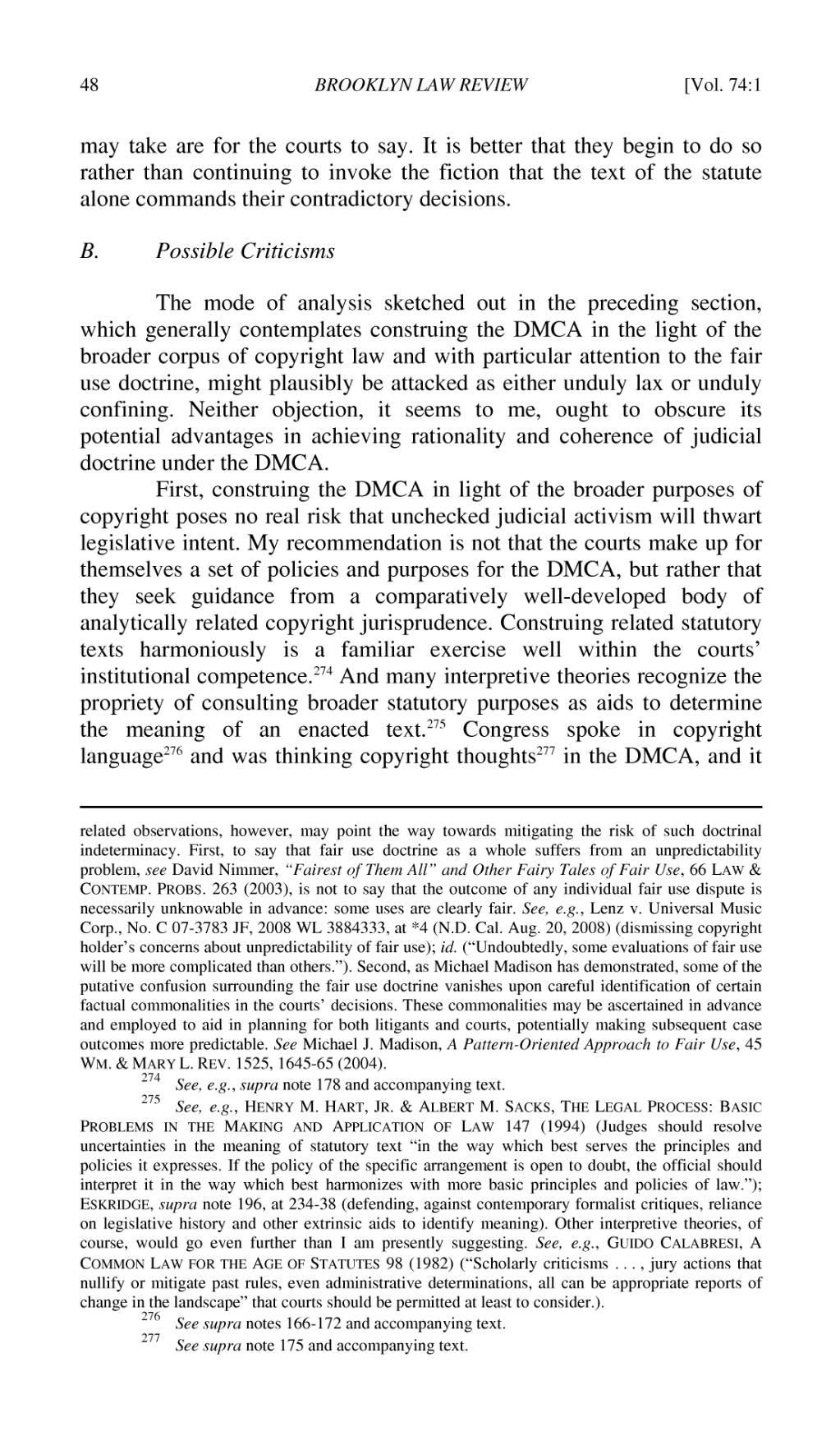may take are for the courts to say. It is better that they begin to do so rather than continuing to invoke the fiction that the text of the statute alone commands their contradictory decisions.
B. Possible Criticisms
The mode of analysis sketched out in the preceding section, which generally contemplates construing the DMCA in the light of the broader corpus of copyright law and with particular attention to the fair use doctrine, might plausibly be attacked as either unduly lax or unduly confining. Neither objection, it seems to me, ought to obscure its potential advantages in achieving rationality and coherence of judicial doctrine under the DMCA.
First, construing the DMCA in light of the broader purposes of copyright poses no real risk that unchecked judicial activism will thwart legislative intent. My recommendation is not that the courts make up for themselves a set of policies and purposes for the DMCA, but rather that they seek guidance from a comparatively well-developed body of analytically related copyright jurisprudence. Construing related statutory texts harmoniously is a familiar exercise well within the courts’ institutional competence.[1] And many interpretive theories recognize the propriety of consulting broader statutory purposes as aids to determine the meaning of an enacted text.[2] Congress spoke in copyright language[3] and was thinking copyright thoughts[4] in the DMCA, and it
- ↑ See, e.g., supra note 178 and accompanying text.
- ↑ See, e.g., Henry M. Hart, Jr. & Albert M. Sacks, The Legal Process: Basic Problems in the Making and Application of Law 147 (1994) (Judges should resolve uncertainties in the meaning of statutory text “in the way which best serves the principles and policies it expresses. If the policy of the specific arrangement is open to doubt, the official should interpret it in the way which best harmonizes with more basic principles and policies of law.”); Eskridge, supra note 196, at 234-38 (defending, against contemporary formalist critiques, reliance on legislative history and other extrinsic aids to identify meaning). Other interpretive theories, of course, would go even further than I am presently suggesting. See, e.g., Guido Calabresi, A Common Law for the Age of Statutes 98 (1982) (“Scholarly criticisms . . . , jury actions that nullify or mitigate past rules, even administrative determinations, all can be appropriate reports of change in the landscape” that courts should be permitted at least to consider.).
- ↑ See supra notes 166-172 and accompanying text.
- ↑ See supra note 175 and accompanying text.
